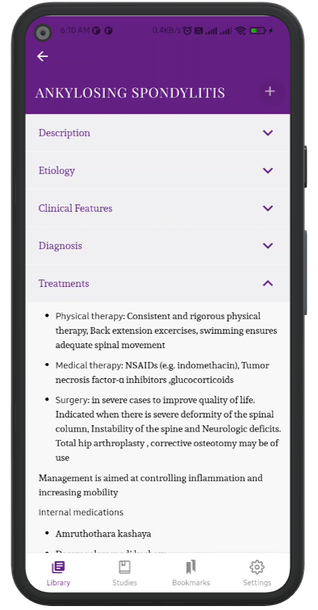DIABETIC RETINOPATHY
Description
- Diabetic retinopathy (DR) is a vascular disease of the retina affecting individuals with long standing diabetes mellitus. Diabetic retinopathy is a leading cause of blindness
- Loss of vision is typically insidious and occurs in most patients 20-30 years after the onset of DM, but acute loss of vision may occasionally occur as a result of retinal detachment, vitreous haemorrhage, or macular oedema
Classification
Non-proliferative diabetic retinopathy (NPDR)
- Mild NPDR
- Moderate NPDR
- Severe NPDR
- Very severe NPDR
Proliferative diabetic retinopathy (PDR)
Diabetic maculopathy
Advanced diabetic eye disease (ADED)
Types
The following symptoms in uncontrolled diabetic patients might be a developing diabetic retinopathy
- Blurred vision
- Impairment of colour vision
- Floaters, or transparent and colourless spots and dark strings that float in the patient’s field of vision
- Patches or streaks that block the person’s vision
- Poor night vision
- Sudden and total loss of vision
- Diabetic retinopathy typically presents no symptoms during the early stages
Non-proliferative diabetic retinopathy (NPDR)
Ophthalmoscopic features of NPDR include:
- Microaneurysms
- Retinal haemorrhages
- Retinal oedema
- Hard exudates
- Cotton-wool spots- are small whitish fluffy superficial lesions on the retina
Proliferative diabetic retinopathy (PDR)
- The occurrence of neovascularization is the hallmark of PDR. New vessels may proliferate in the plane of the retina or spread into the vitreous as vascular fronds. Later on results in the formation of Fibro vascular epiretinal membrane formed due to condensation of connective tissue around the new vessels
- Vitreous detachment and vitreous haemorrhage may occur in this stage
Diabetic maculopathy
- Changes in the macular region may be associated with non-proliferative diabetic retinopathy (NPDR) or proliferative diabetic retinopathy (PDR). The diabetic macular oedema (DME) occurs due to increased permeability of the retinal capillaries
Advanced diabetic eye disease
It is the result of uncontrolled proliferative diabetic retinopathy. It is marked by complications such as:
- Persistent vitreous haemorrhage
- Tractional retinal detachment
- Neovascular glaucoma
Investigation
Screening for diabetic retinopathy
- Urine examination - Blood sugar estimation, 24-hour urinary protein
- Renal function tests
- Lipid profile
- Haemogram
- Glycosylated haemoglobin (HbA1C)
- Fundus fluorescein angiography - to elucidate areas of neovascularization and capillary non-perfusion
- Optical coherence tomography (OCT) - to study detailed structural changes in diabetic maculopathy
Treatments
- Metabolic control of diabetes mellitus and associated risk factors including dietary habits
- Intravitreal anti vascular endothelial growth factor (VEGF) drugs
- Intravitreal steroids
- Laser therapy
- Surgical treatment
- Strict regular eye check-up, ophthalmoscopy etc.
- Advice to avoid heavy weight lifting especially in PDR cases
Ayurvedic Treatment
Internal medicines
- Nisakatakadi kashaya
- Guduchyadi kashaya
- Patoladi kashaya
- Chandraprabha vati
- Siva gutika
- Kaisora guggulu
- Patoladi gritha
Procedures
Measures to control bleeding
- Netraseka - Yasti + Darvi ksheera kashaya , Mridweekadi kashaya , Manjistadi ksheera kashaya ,
- Seka - Ajaksheera + Yashti (in Haemorrhagic conditions)
- Jaloukavacharana – forehead and eyelid
- Virechana - Avipathi Choorna
- Nasya - Durva gritha
- Pratimarsa nasya - Durva gritha
- Anjana – Chandanadi
- Tala – Asana manjishtadi + Kachooradi
- Shirodhara/ Siroabyanga with Asana Manjistadi kera
- Tarpana - Jeevaneeya gana gritha
- Putapaka
Department
Salakya - Netra

